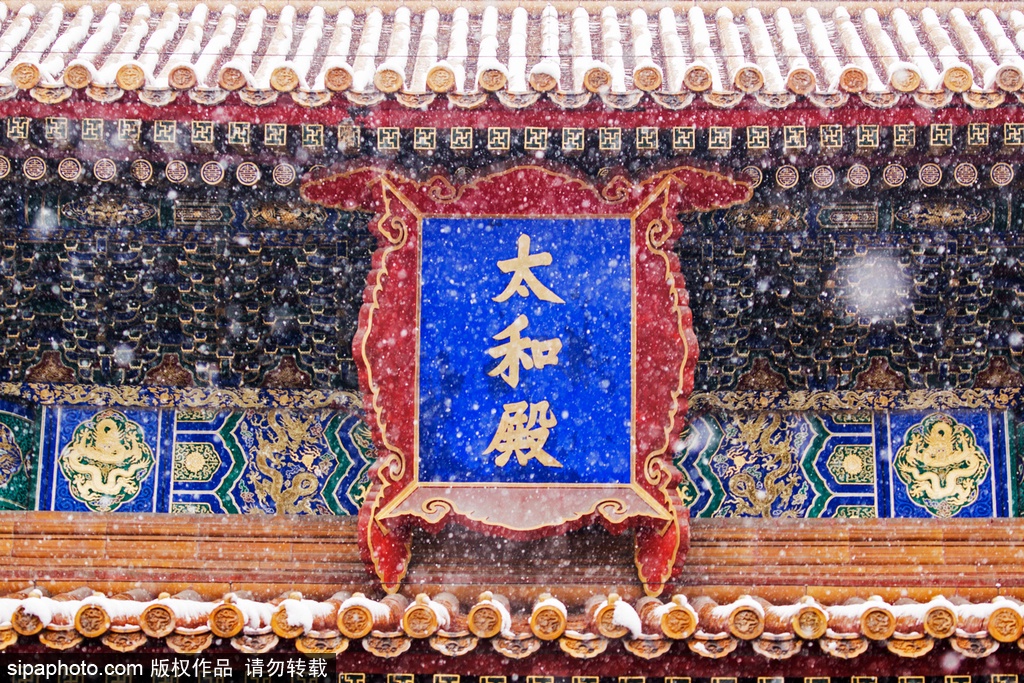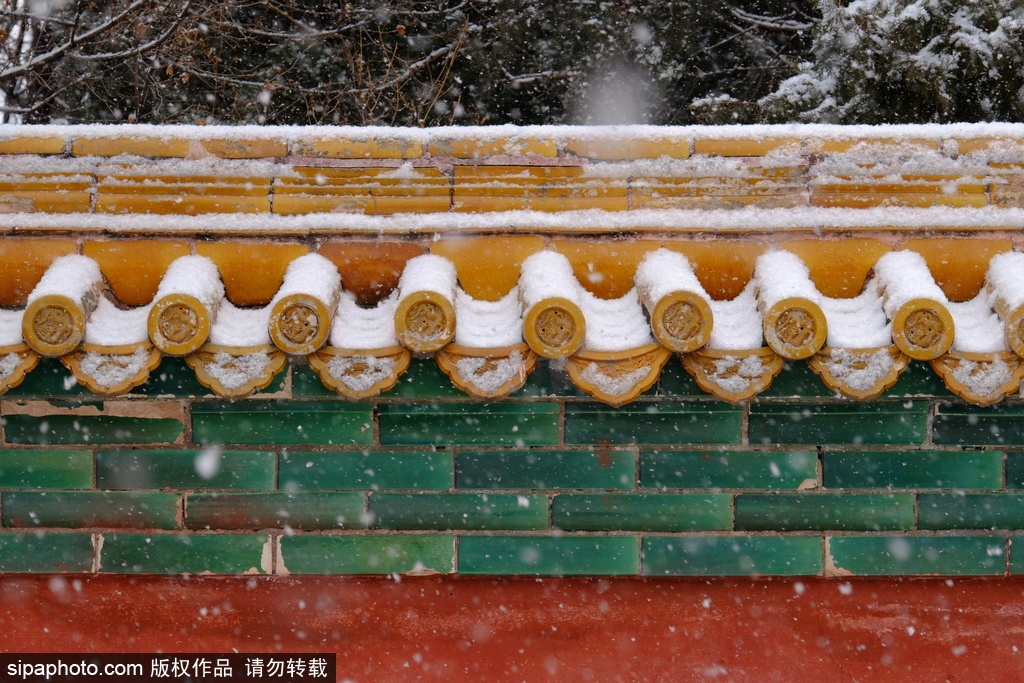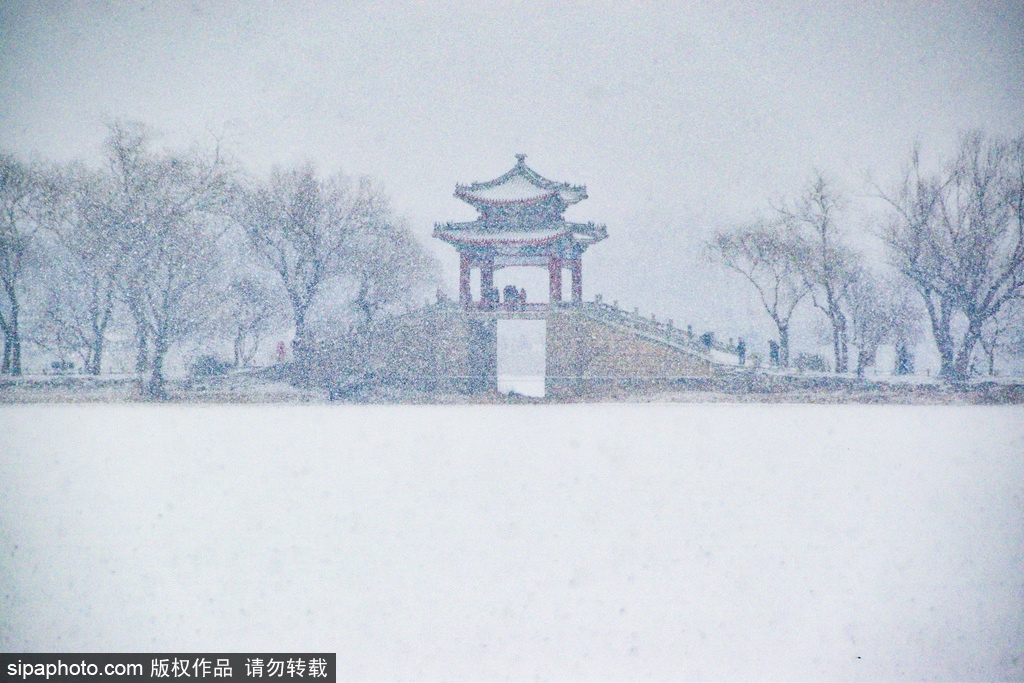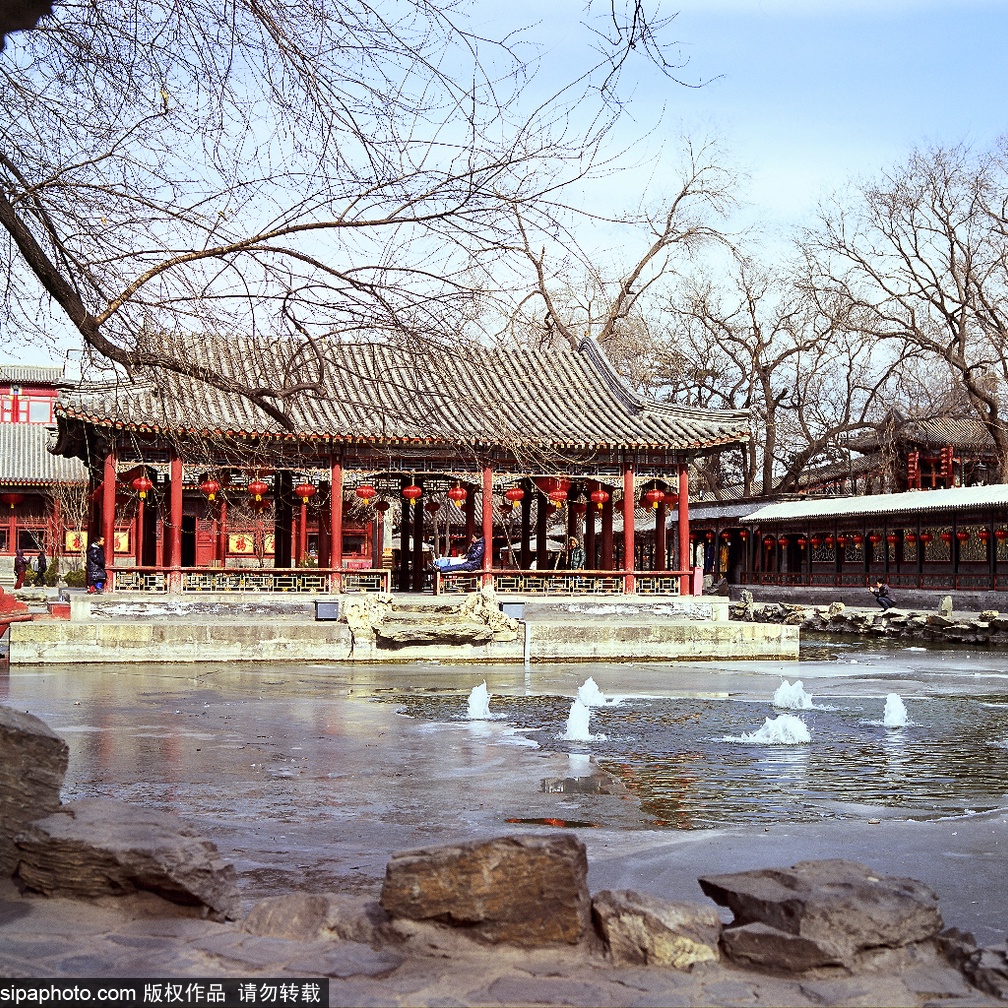Admiring snow falling down in the imperial palace is a must-do in Beijing. The white snowflakes fluttered in front of red walls makes the most beautiful landscape this winter. We have listed three attractions to enjoy this beauty.
The Forbidden City

In the heart of Beijing, the Forbidden City is hailed as the icon of Beijing. As the royal residences of the emperors of the Ming and Qing dynasties from the 15th to 20th century, it was constructed about 600 years ago and witnessed the enthronement of 14 Ming and 10 Qing emperors over the following 505 years. The Forbidden City was inscribed as a World Heritage Site by UNESCO in 1987.
In winter, the splendid imperial palace looks gentler than in other seasons. Golden vitreous tiles hide its shine in pure snow. The integration of white snow and red and yellow buildings bring you a unique experience on visiting Beijing.
To Wu Men:
Bus:
The bus stops near Wu Men are Tian’anmen East (天安门东, the pronunciation is Tian An Men Dong) and Tian’anmen West (天安门西, the pronunciation is Tian An Men Xi). The ticket usually cost 2 RMB at least.
Buses stop at Tian’anmen East: 1, 120, 2, 52, 59, 82, 99, Night Bus 1 (夜1), Night Bus 2 (夜2), Sightseeing Bus 1 (观光1线), Sightseeing Bus (观光2线)
Buses stop at Tian’anmen West: 1, 5, 52, 99, Night Bus 1(夜1), Sightseeing Bus (观光2线)
Subway:
Subway is also available. You can take subway Line 1 and get off at Tian’anmen West Station or Tiananmen East Station. If you don’t have a plan to visit Tian’anmen Square, you can get off at Tian'anmen East and exit through Exit D.
The Summer Palace

The Summer Palace is a vast ensemble of lakes, gardens and palaces in Beijing. Mainly dominated by Longevity Hill and Kunming Lake, it covers an expanse of 2.9 square kilometers, three-quarters of which is water. In December 1998, UNESCO included the Summer Palace on its World Heritage List. Located in the northwest outskirts of Beijing, 15 km from the city, the Summer Palace is originally named "Qingyiyuan" (Gardens of Clear Ripples). Based on the scenery of West Lake as the chief source, the garden absorbs the design method as well as the artistic conception of traditional southern Chinese garden. It gets the reputation of the “museum of the royal garden”.
As the largest royal garden of the Qing Dynasty, it features wonderful scenery in four seasons. It is a masterpiece of Chinese landscape garden design. The natural landscape of hills and open water is combined with artificial features such as pavilions, halls, palaces, temples and bridges to form a harmonious ensemble of outstanding aesthetic value. In winter, the palace gets more mild and vintage.

Admission Fee: 30 RMB April 1 – October 31
20 RMB November 1 – March 31
Opening Hours: 6:30 – 20:00 last entry at 18:00 April 1 – October 31
7:00 – 19:00 last entry at 17:00 November 1 – March 31
Address: #19 Xinjiangongmen Road, Haidian District, Beijing
北京市海淀区新建宫门路19号
Transportation:
West Gate: Take Bus No.469 or 539 and get off at Summer Palace West Gate Stop (颐和园西门站)
North Gate: Take Subway Line 4 and get off at Beigongmen Station (北宫门站).
Take Bus No.303, 330, 331, 346, 375, 384, 563, 601, 608, 683, 696, 697, 718 and get off at Summer Palace North Gate Stop (颐和园北宫门站)
Prince Kung's Mansion

Prince Kung's Mansion, once the dwelling of Grand Secretariat Heshen was built in 1776, the 41st year reigned by Emperor Qianlong in the Qing Dynasty. The mansion has undergone over 230 years of ups and downs. Although there were dozens of royal mansions in Beijing, most of them were damaged or diverted for other uses. Prince Kung’s Mansion, consisting of the residential area and garden, is the only and the best preserved Manchu royal mansion that maintains the architectural characteristics of ancient gardens and keeps open to the public in Beijing. It has three rows of buildings in the east, middle and the west. From the south to the north, a number of quadrangle courtyards, each including three yards, have been fitly located along the central axis with a distinct layout. The buildings embody the royal manner and majesty, as well as the elaborate folk style, making the biggest feature of the prince’s palace. Gardens integrate the layout of gardens in ancient south China as well as the pattern in North China, and also blend the western architectural style with Chinese classical botanical garden construction.
Address: No 17, West Qianhai Street, Xicheng District, Beijing
Website: http://www.pgm.org.cn/ (Chinese)
http://www.pgm.org.cn/newenglish/index.shtml (English)
Open hour: March 15 - October 31: 8:00 - 17:00
Nov 1- March 14: 9:00 - 16:00
Closed on Mondays (except on national holidays)
E-mail: sjb@ciae.com.cn
Ticket: 40 yuan/person
Notes:
1. Children under 120cm in height: free of charge.
2. Retired veterans: free of charge with a valid certificate (free tickets may be collected at the Tourist Center by presenting a veteran’s certificate).
3. Disabled: free of charge with a valid certificate (free tickets may be collected at the Tourist Center by presenting a certificate).
4. Students (excluding graduate students), active duty military personnel and seniors: half price with a valid certificate.



